Learn the sun facts
You know the distinctive ache and the tell-tale redness. Besides being uncomfortable, sunburn can do some serious harm to your skin. Too much sun can lead to wrinkles and age spots and even skin cancer. But it’s not just sunny days at the beach that count. Protect yourself from the pain and damage by learning the facts.
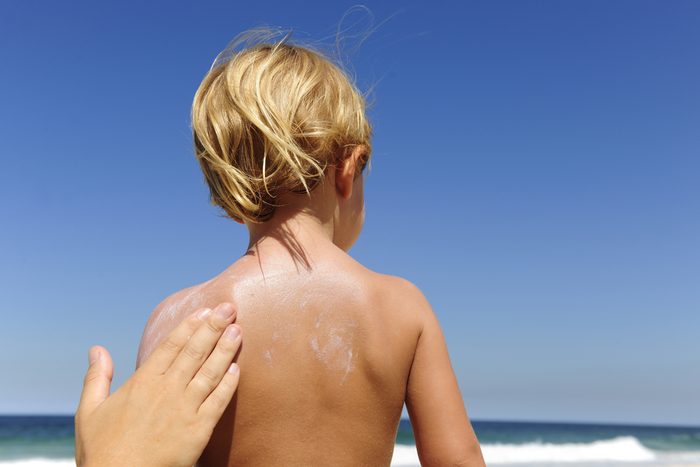
Myth: 80 percent of sun damage happens before age 18
Yes, those childhood sunburns are problematic. Even one blistering sunburn in your youth can double your chance of developing melanoma, according to the American Academy of Dermatology. But you’ll be in a lot worse shape if you continue to have bad sun habits as an adult. According to a study published in the journal Photochemistry and Photobiology, less than 25 percent of sun damage occurs before the age of 18, and 10 percent more accrues every 10 years after that. “It is never too late to protect ourselves,” says Deanne Mraz Robinson, MD, and president and co-founder of Modern Dermatology in Westport, Connecticut. “We have the opportunity to intervene at any age and start protecting and repairing some of the photo damage.” She recommends being sun smart by applying a broad-spectrum SPF every day, limiting direct sun exposure, and using topical antioxidants. Check out the 12 things that increase your risk of sun damage.
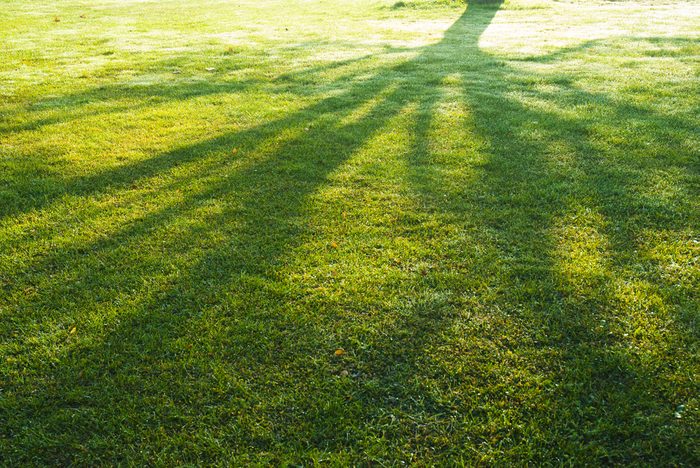
Myth: You won’t burn in the shade
Actually you can, and UV radiation reflected off nearby surfaces is the culprit here. According to the World Health Organization (WHO), even the most seemingly benign surfaces can increase your chances of burning. For example, sea foam reflects 25 percent of UV radiation, sand reflects 15 percent, and even grass, soil, and water reflect a small amount (less than 10 percent). And this isn’t only a problem in summer. Fresh snow nearly doubles your UV exposure; it can also damage and even burn your eyeballs (the technical term for that condition is photokeratitis). Take proper precautions whenever you’re outside during the day. And try to avoid these other common sunscreen mistakes.
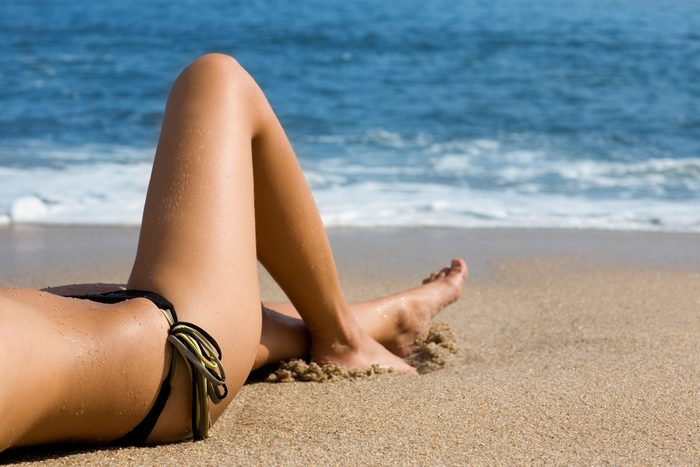
Myth: It’s OK to tan as long as you don’t burn
“Wrong,” says Dr. Mraz Robinson emphatically. This misconception likely occurs because we’ve been conditioned to see a tan as “healthy.” But in reality, that bronzed skin is the result of DNA damage, and it increases your risk for developing all types of skin cancer. “When our skin is exposed to UV radiation, our skin-cell DNA becomes damaged and our body tries to repair the damage,” she explains. “As a consequence of the damage and subsequent repair, melanin is produced and that is what accounts for the darkening of our skin tone.” This myth is probably the reason that skin cancer is the most common cancer in the United States, according to the American Academy of Dermatology, affecting more than 3 million people each year. These are the signs you’ve gotten too much sun.

Myth: You can’t get a sunburn on cloudy days
Not only can you still get a sunburn—you might get an even worse sunburn. People are often lax about sunscreen application when they don’t see a bright sun overhead. What they don’t realize is that 80 percent of the sun’s rays can pass through light cloud cover, according to the WHO. And even more surprising is a phenomenon called the broken-cloud effect. On partly cloudy days, it can raise surface UV radiation by 25 percent and make the UV rays linked to skin damage 40 percent stronger. Scientists suggest that this may happen when UV rays are reflected off the sides of dense clouds or are redirected as they pass through thin ones. Either way, you need as much sunscreen on cloudy days as on clear ones. Here are 10 things not to do after you get a sunburn.
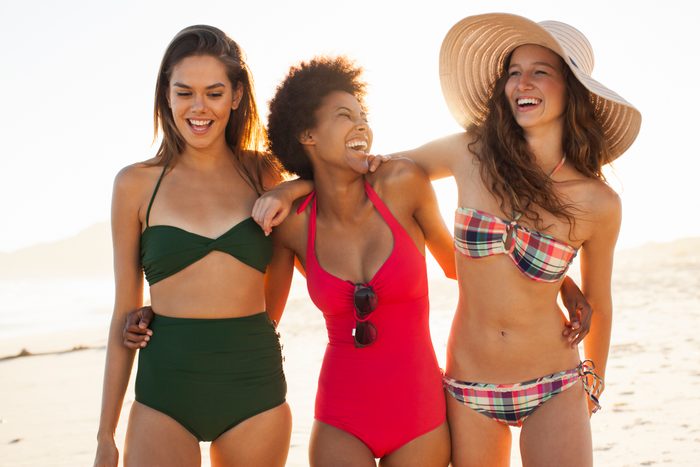
Myth: If you have dark skin, you don’t need sunblock
Make no mistake about it: If you have skin, you can get a sunburn and skin cancer. In fact, a study in the Journal of the American Academy of Dermatology found that African Americans are the most likely to die from melanoma, even though they are the least likely to be diagnosed with it in the first place. While a variety of reasons may contribute to a later diagnosis and subsequent fatality, this myth is one of them. A naturally higher level of the pigment melanin does afford some protection from the sun, but it doesn’t mean that sun damage is not happening, especially over prolonged periods of time. “Sunscreens are helpful for even dark-skinned individuals,” says Erin Boh, MD, PhD, chair and professor of dermatology at Tulane University School of Medicine. “And remember that children can get sunburned despite their skin color. I advise all patients to use at least an SPF 30 sunscreen or a physical barrier such as zinc or titanium oxide.” Don’t miss the other habits that raise your risk of sun damage.
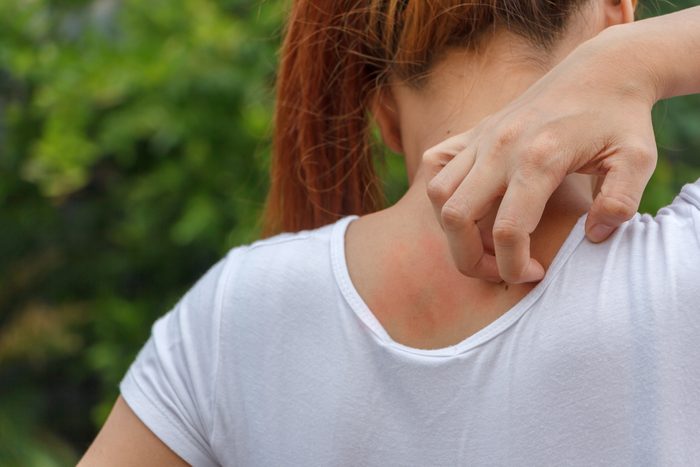
Myth: The first sign of a sunburn is pink skin
Pink skin is an obvious and early sign, but believe it or not, it may not be the earliest, especially if you have a darker complexion. “You can have a sunburn long before your skin becomes visibly pink,” says Michele Green, MD, a dermatologist at Lenox Hill Hospital in New York City. “In fact, the first sign you may be getting a sunburn is that your skin will start to itch and feel hot.” Other signs can include thirst, skin tenderness, and tightness, and having your skin turn white when you press on it. Pay attention to your body: It’s trying to tell you something. Don’t miss the 6 silent signs that your sunburn is actually sun poisoning.
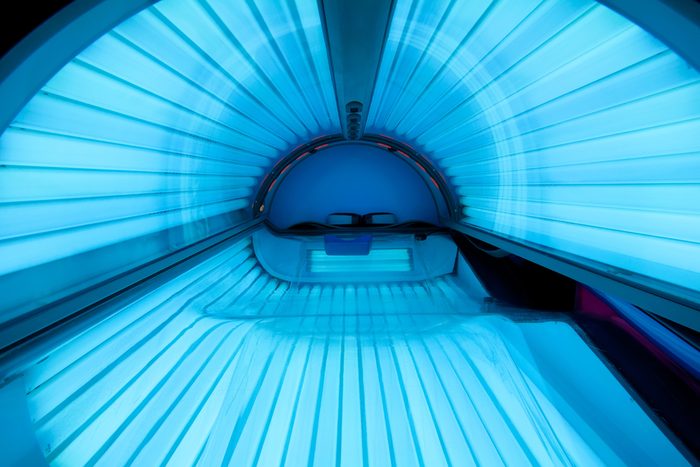
Myth: A tanning bed is safer than the sun
According to the American Academy of Dermatology, indoor tanning may be responsible for more than 400,000 cases of skin cancer in the United States every year. Here are some other terrifying statistics: Even just one appointment at your local tanning salon can increase your risk of melanoma, the deadliest cancer, by 20 percent; your risk of squamous cell carcinoma by 67 percent; and your risk of basal cell carcinoma by 29 percent. And women under 30 are a whopping six times more likely to develop melanoma when they use tanning beds. Brazil and Australia have banned them, according to the Skin Cancer Foundation, while in the United States, some states prohibit those under 18 from using them.
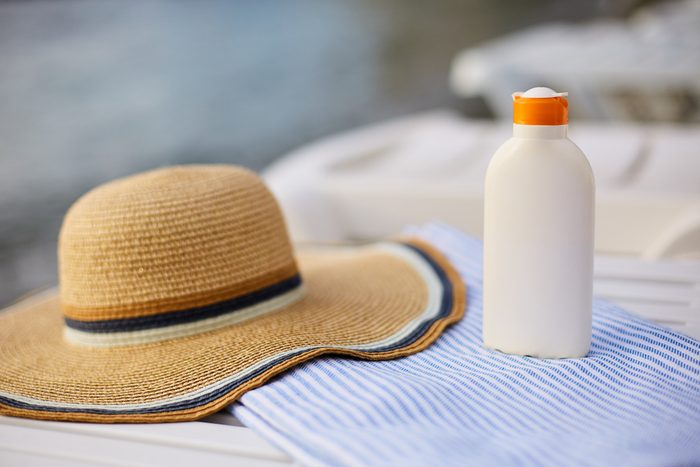
Myth: A higher SPF won’t provide greater protection
This myth is tricky. Here’s why: Some testing has shown that SPF labels sometimes don’t deliver on their claims and that people also often misjudge just how much sun protection sunscreens afford as those SPF numbers go up. That said, a 2018 study in the Journal of the American Academy of Dermatology found that SPF 100 was, indeed, more effective at preventing sunburn than SPF 50. However, high SPFs don’t protect you for longer, which is essential to remember. “I tell patients that the higher the number, the better the coverage—not the longer the coverage,” says Dr. Boh. “None last more than approximately two hours, so reapply every two hours or after getting wet.” Dr. Boh adds, “There are no truly waterproof or sweat-proof sunscreens.” Check out the 12 sunscreens that top dermatologists actually use on themselves.
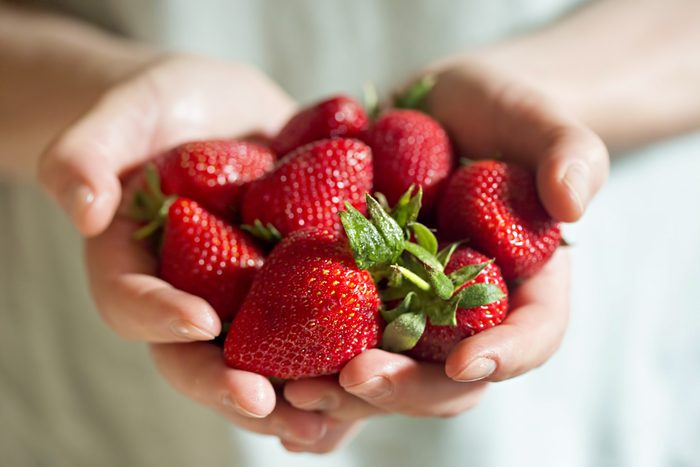
Myth: Eating foods like tomatoes and strawberries will prevent sunburn
If something sounds too good to be true, it probably is. The best way to protect yourself is still by using sunblock diligently, covering up, and avoiding the sun when it’s strongest. You can, however, gain some additional protection with this “inside out” philosophy. “Strawberries contain vitamin C and tannins, which are beneficial to sun protection, and tomatoes contain high amounts of lycopene, which is known to protect the skin from UV damage,” says Dr. Green. “But while eating them may offer some natural sun protection, it shouldn’t be a reason to skip the sunscreen.” There are a few foods that offer natural sun protection.
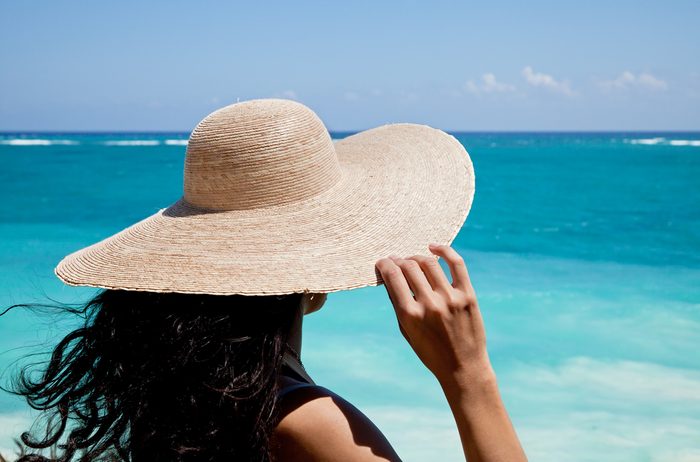
Myth: Clothing protects your skin from the sun
Surprisingly, coverage does not necessarily equal protection. While you’re better off with darker colors, tighter weaves, and synthetic fabrics, according to the Skin Cancer Foundation, you’re not completely safe—by any means. “Regular clothing will only give you an SPF of 4 to 8, depending on the color of the fabric and the tightness of the weave,” explains Dr. Mraz Robinson. What about sun protective clothing? “UPF (ultraviolet protection factor) clothing and hats are specially designed to provide more photo protection and block UV radiation.” She also suggests a way to increase the UPF factor in your regular wardrobe: “Rit Sun Guard is a powdered UV protection that you can wash into your clothes. It increases the UPF factor of regular clothing to 30 and lasts for up to 20 washes.” (Check out the best sun hats that dermatologists recommend.)
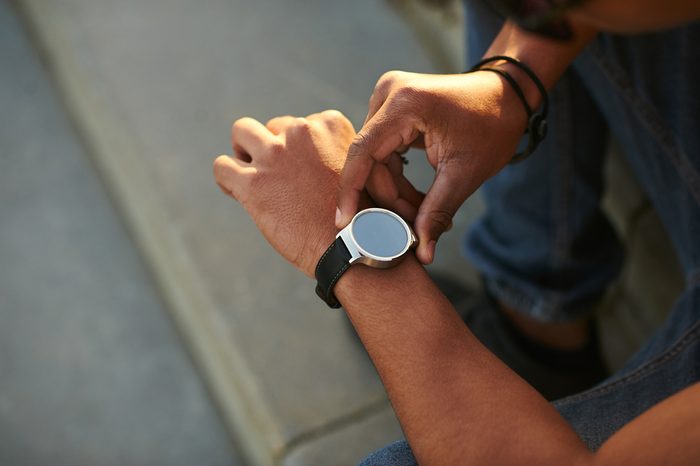
Myth: You will only burn between 10 a.m. and 2 p.m.
While the sun’s rays are strongest during that window, burns can also happen earlier and later. So if you’re out and so is the sun, you need to protect yourself with sunscreen, sun-protective clothing, and shade. You can also assess the sun’s strength with “the shadow rule.” Dr. Mraz Robinson explains, “The intensity of the UV rays is directly related to the angle of the sun. When a person’s shadow is shorter than the person, the intensity of the UV rays from the sun is more likely to cause sunburn.” Here’s how to remember it: Short shadows mean seek shade. Here’s what the labels on your sunscreen really mean.

Myth: A base tan protects you from sunburn and sun damage
This myth contains a modicum of scientific and anecdotal truth about that first tan of the season, and that’s what makes it even more dangerous. A base tan is the equivalent of going out in the sun with SPF of 3 or less—meaning that if it would normally take you 10 minutes to burn, you might buy yourself an extra 10 minutes. But, according to dermatologists, that protection is negligible, and in fact, it results in a false sense of security that can make people more likely to participate in unwise behavior, such as sunbathing or engaging in outdoor activities without sunscreen. As a result, this puts them at a greater risk for skin cancer.
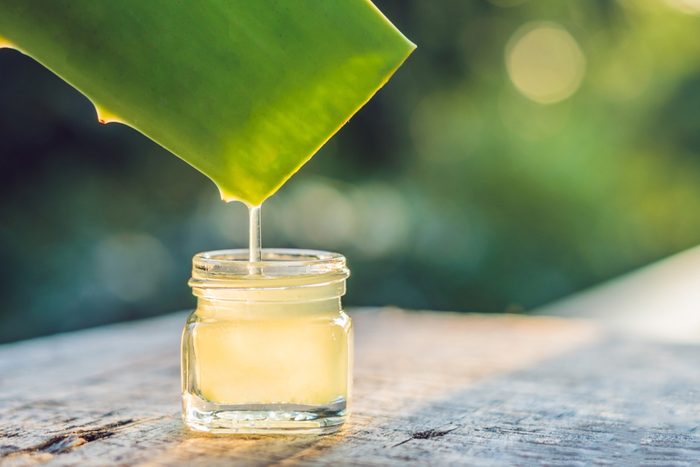
Myth: If you get a sunburn, it just has to run its course
To a degree, this is true, but there are some things you can do to mitigate its effects. “If you catch a sunburn early—as soon as you feel the tingle—you can slow it down and reduce the severity with a non-steroidal anti-inflammatory drug like Aleve or Advil,” says Christopher Huerter, MD, associate professor of medicine and chief of dermatology at Creighton University School of Medicine in Omaha. After that, cold compresses, aloe, and those same medications can take the edge off. But there are times when you should see a doctor, like if your sunburn results in a fever and chills. In that case, says Dr. Huerter, “we would give [patients] a dose of oral corticosteroid, like prednisone.” Check out these 11 sunburn remedies that actually work.